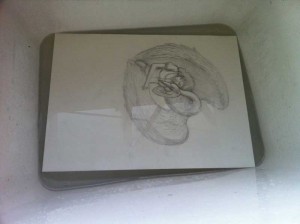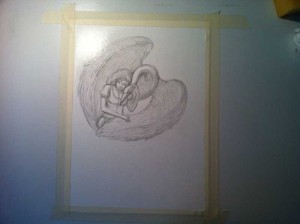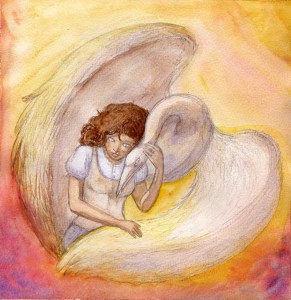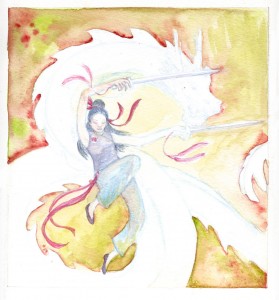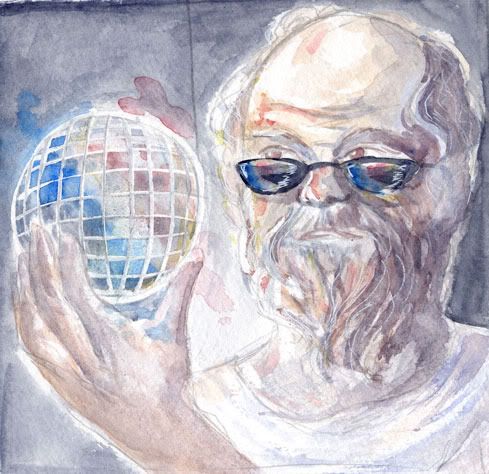Caress – Step-by-step
I’ve been trying to do a phoenix picture for a while, but none of my concept sketches were working. Late last night I started on this piece though, and quite liked it. The bird isn’t a phoenix but oh well. Here’s some pictures I took during the painting process.
After doodling some concepts for the painting, I choose one I like and working from that concept, draw the image straight onto watercolour paper. I’ve included some shading to give me some information about light and dark areas. I struggled with the face planes for a bit but was able to scribble tests of what looked good for the fall of light by scanning the sketch and putting shadows down digitally in a trial and error manner. Once I was happy with the stark shadows on the girl’s face I copied these shadows over to the sketch.
Here’s the drawing submerged in our laundry sink. This is to stretch the paper – something I don’t normally do but wanted to trial this time. The idea is to get the paper to expand by soaking in all the water…
…Then tape it down securely to a board so that it remains stretched. When reapplying water during the painting process, the paper will not warp, or at least if it does warp, it will subsequently dry flat as the tape is keeping the paper stretched.
Once I have the image taped down, I put down some initial colours:
Then I let the picture dry (well, force it to dry with some encouragement from a hairdryer) and work mostly wet-on-dry for the rest of the painting process. I have problems with my tape – the paper pulled itself free from the tape as it shrinks and ended up cockling. I use this opportunity to take a progress scan:
I then soak the back of the painting to make the paper expand again and try taping it to my board again. It works okay but the painting still gets unstuck from the tape as it dries. Guess I need stronger tape. I’m not a fan of the gum tape stuff but maybe it’s the way to go…
Here’s the finished picture:
My big mistake in this painting was trying to use bruising and scratching techniques to get the feathers done. It really didn’t work out and I spent some time trying to work out how to heal over the paper. Well, that wasn’t going to happen. I’ve also done a pretty dodgy scan, the colours and contrast really didn’t come out great on my scanner. Come visit me and see it in person some time!


